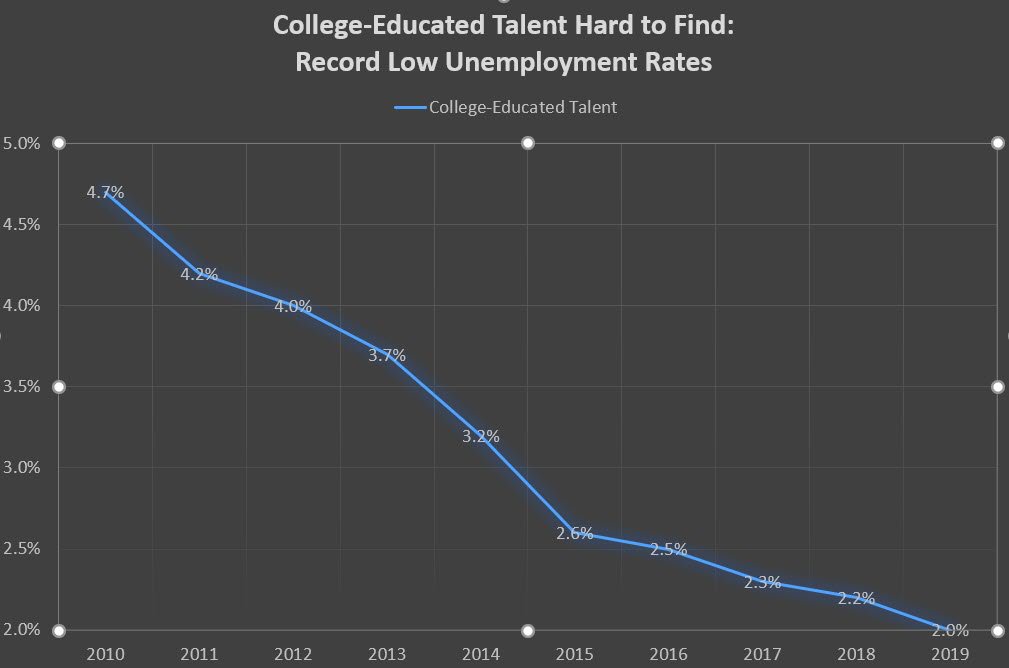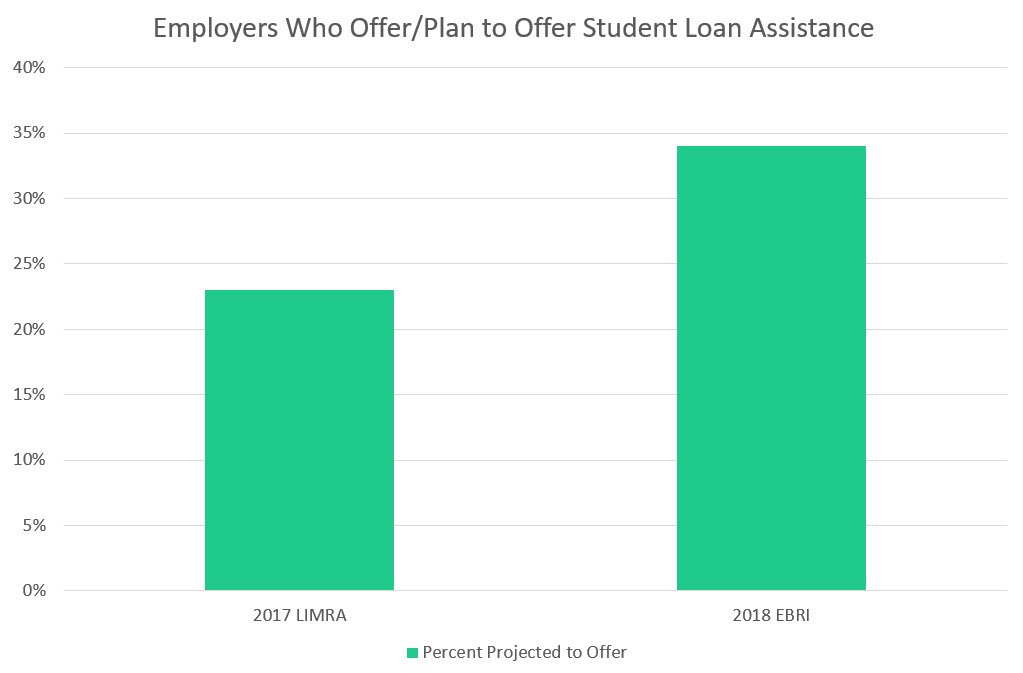The Society for Human Resource Management (SHRM) has announced the results of its 2019 Employee Benefits Study1, which assessed the prevalence of more than 250 benefits through survey responses from thousands of employers.
One clear takeaway: more and more employers are offering Student Loan Repayment.
In 2018, the SHRM study reported that four percent of companies were offering Student Loan Repayment, and in 2019, reports that eight percent of employers now offer the benefit, an increase of 100 percent year-over-year.1
Student Loan Repayment helps companies differentiate themselves and compete for talent from an increasingly smaller pool of candidates. The unemployment rate of college-educated talent continues to decline2, making it more challenging to recruit new team members. Today, 49 out of 50 college-educated workers already have a job3.

Employers who do not act soon to offer Student Loan Repayment will find themselves behind their peers in hiring and retention as competition for college-educated talent continues to intensify.
While SHRM has cited that eight percent (or one in 12) employers now offer Student Loan Repayment, other sources are showing that nearly four times more employers are planning to offer some form of Student Loan Assistance, like Peanut Butter’s Student Loan Resources.
EBRI’s 2018 Employer Financial Wellbeing Survey confirmed:
- 32 percent of employers offer or plan to offer some form of student loan debt relief, ranging from refinancing programs to employer-paid Student Loan Repayment4, and
- 68 percent of employers are examining existing employee benefit data and re-assessing financial wellness needs4.
EBRI’s data confirms an even greater increase in the trend to offer Student Loan Assistance than the 2017 LIMRA Benefit Penetration Rates study5, which reported then that 23 percent of survey participants planned to offer some form of student loan assistance.

In only a year’s time, that’s a 40 percent jump in the number of employers planning to offer Student Loan Assistance.
The scale of student loan debt is of growing national concern. “As of December 2018, more than 44.7 million borrowers owed $1.5 trillion in student loans, a sum that exceeds the gross domestic product of all but a dozen countries around the globe,” said SHRM Chief Knowledge Officer Alexander Alonso, SHRM-SCP. Aside from the sheer burden of that debt carried by college-educated workers, it also delays important financial decisions, like saving for retirement.
Because of the societal impact, Student Loan Assistance will likely become as widely offered as retirement packages, where the recent SHRM study confirms 93 percent of respondents offer access to a retirement plan and 74 percent contribute.1
Smart organizations are paying attention to these reports and offering Student Loan Assistance now — ahead of their competition, while it can still be a differentiator for their firms.
Make sure your organization is ahead of the competition. Schedule time today with a member of Peanut Butter’s Client Solutions team. Your company’s Student Loan Assistance plan can be set up in under an hour, so that you can quickly offer this valuable benefit and support your organization’s growth and retention goals.
References:
- SHRM 2019 Employee Benefits Survey: https://www.shrm.org/hr-today/trends-and-forecasting/research-and-surveys/pages/benefits19.aspx
- Bureau of Labor Statistics: https://www.bls.gov/opub/ted/2018/unemployment-rate-2-1-percent-for-college-grads-3-9-percent-for-high-school-grads-in-august-2018.htm
- Bureau of Labor Statistics: https://www.bls.gov/news.release/pdf/empsit.pdf
- EBRI 2018 Employer Financial Wellbeing Survey: https://www.ebri.org/content/how-employers-are-tackling-student-loan-debt-evidence-from-the-ebri-employer-financial-wellbeing-survey
- LIMRA Understanding Current Trends in Employee Benefits: Benefit Penetration Rates (2017): https://www.limra.com/globalassets/limra/research/infocenter/limra-research-publications-2017.pdf, page 29